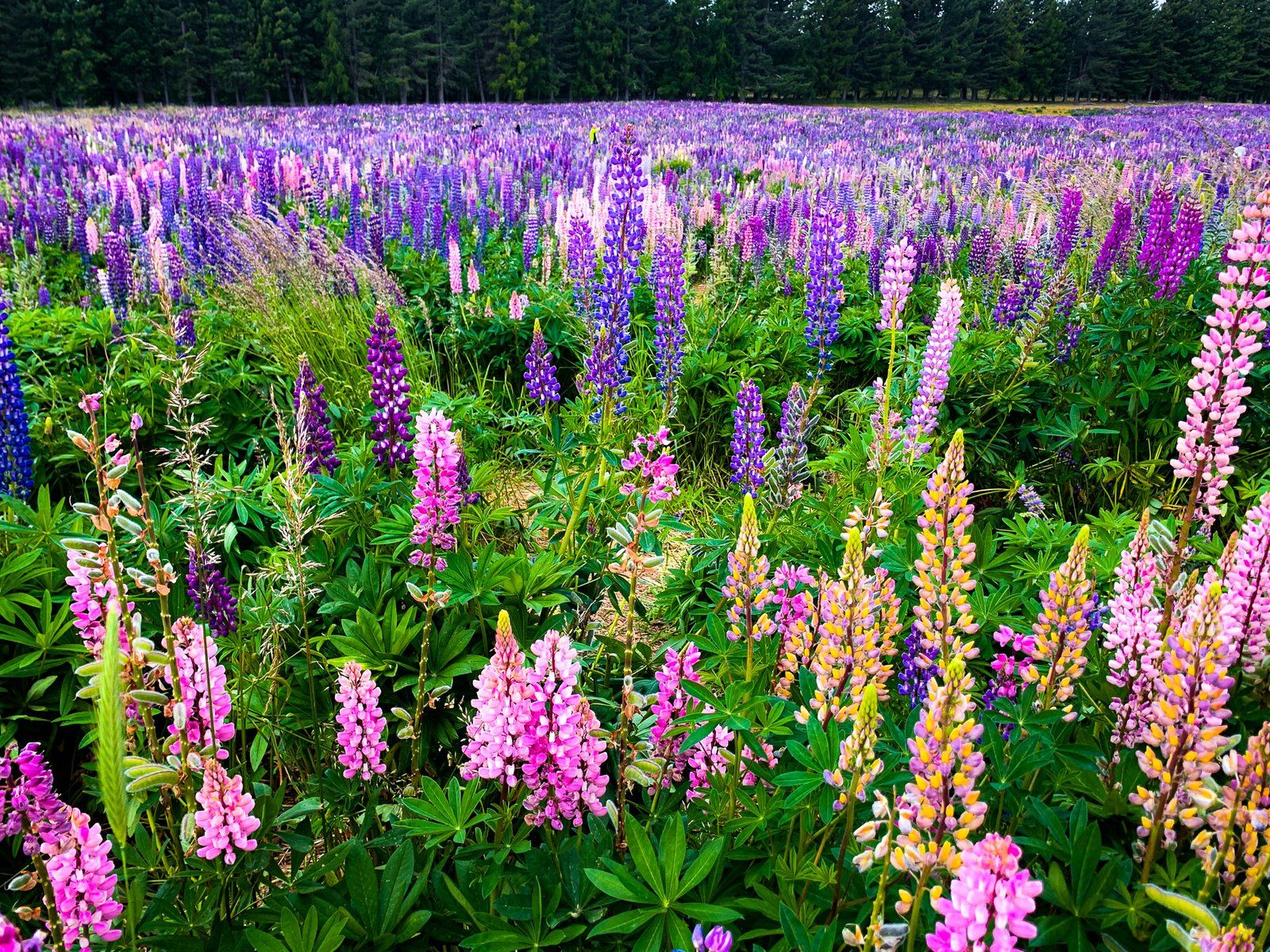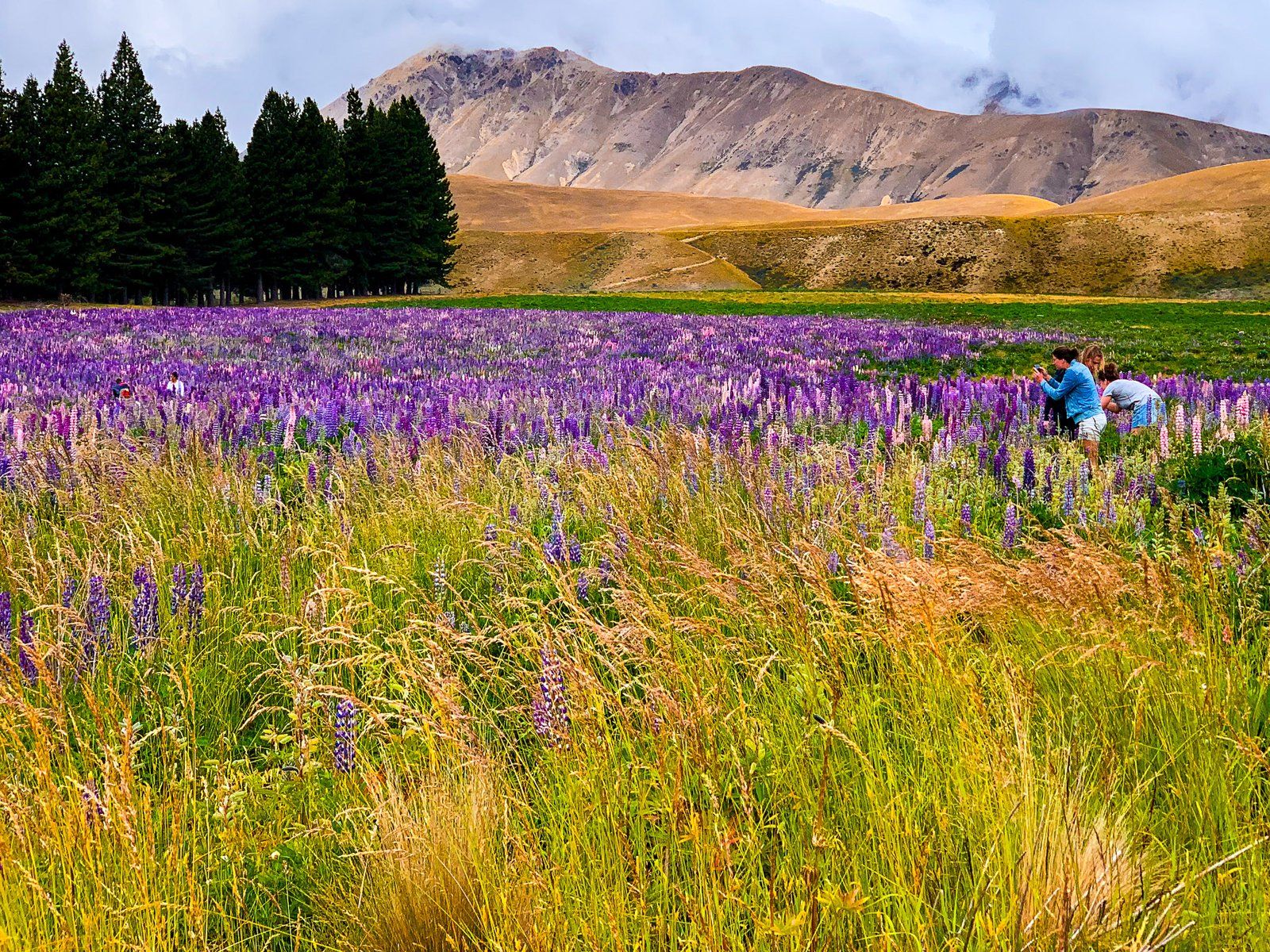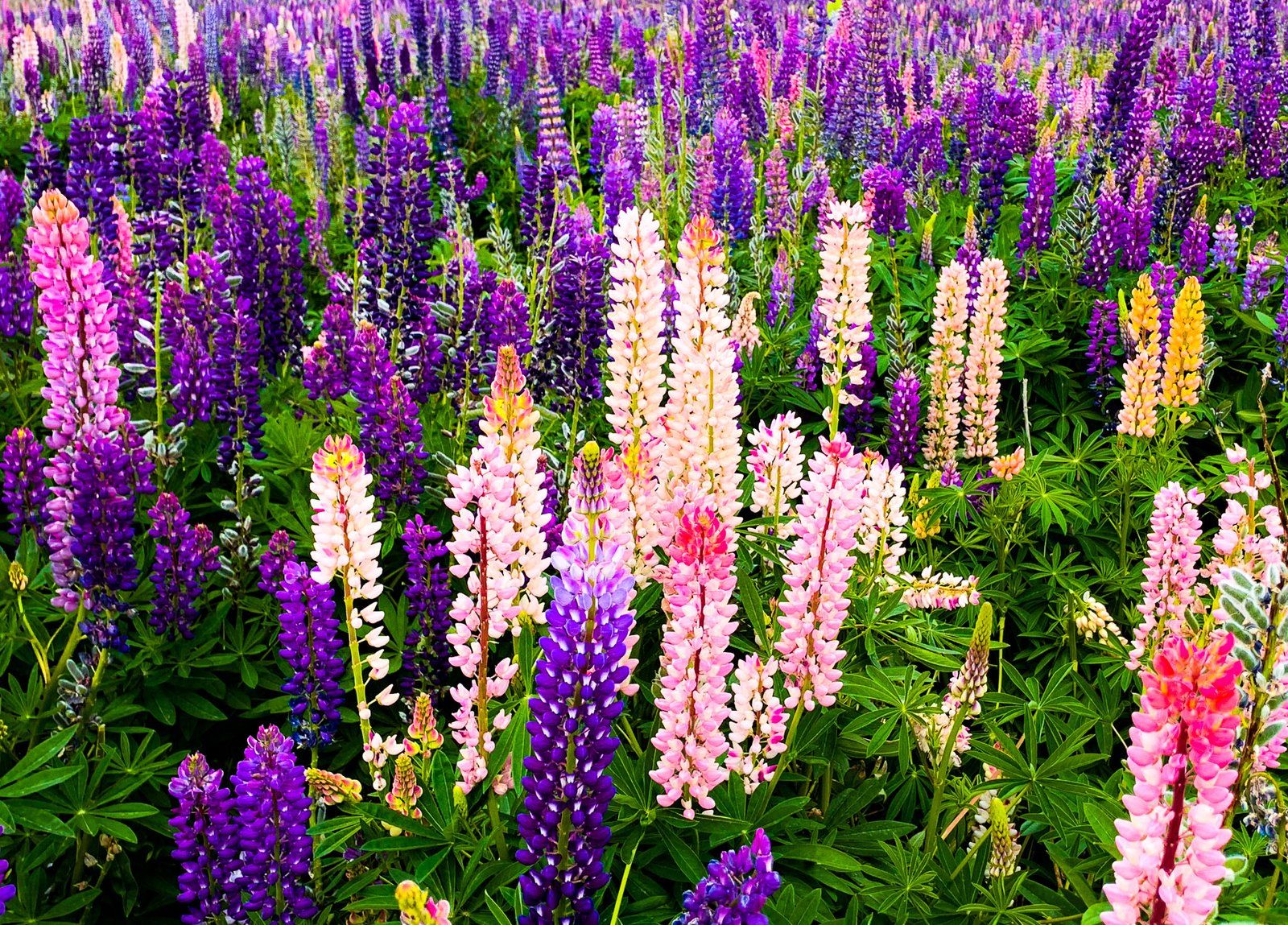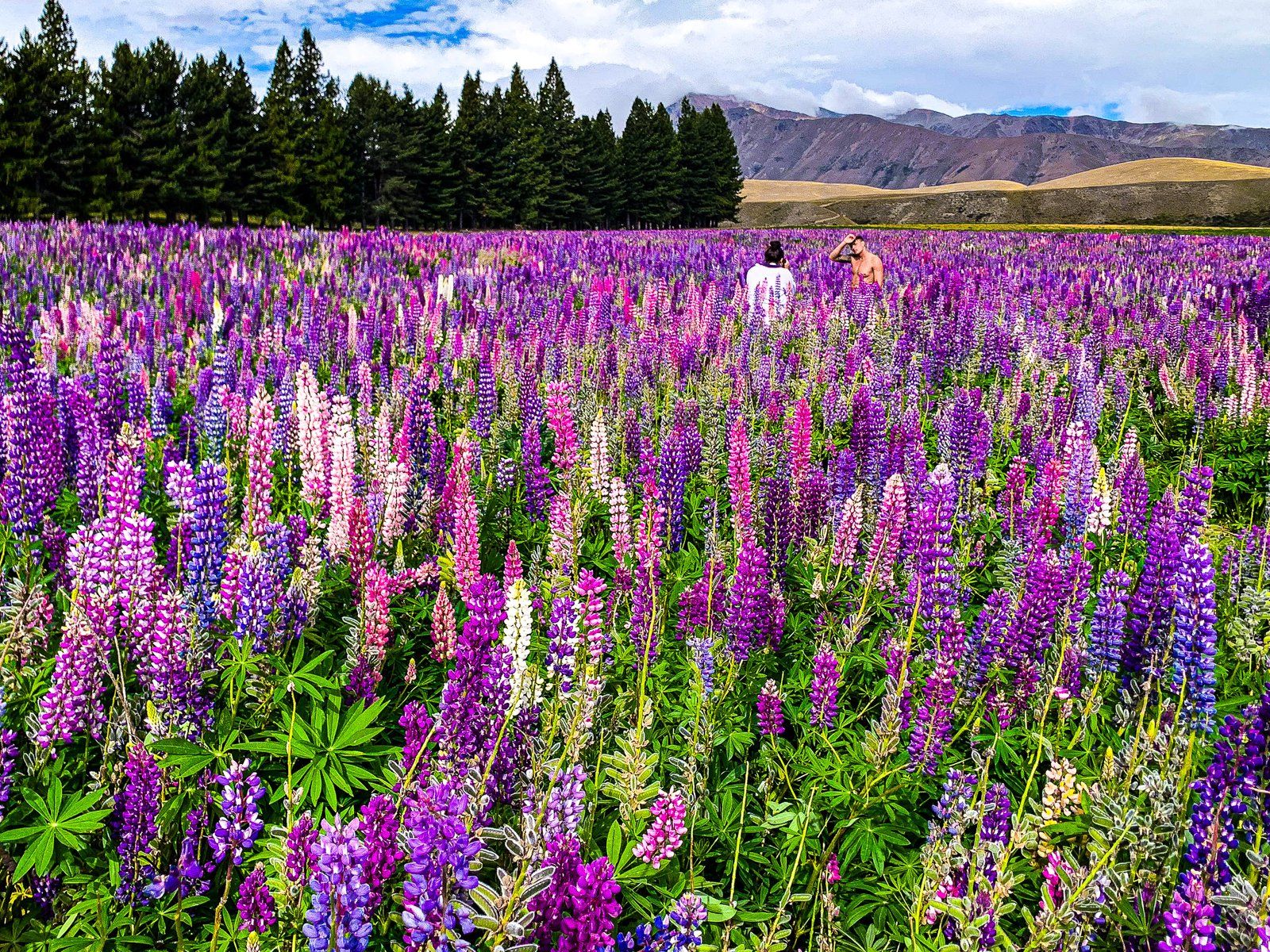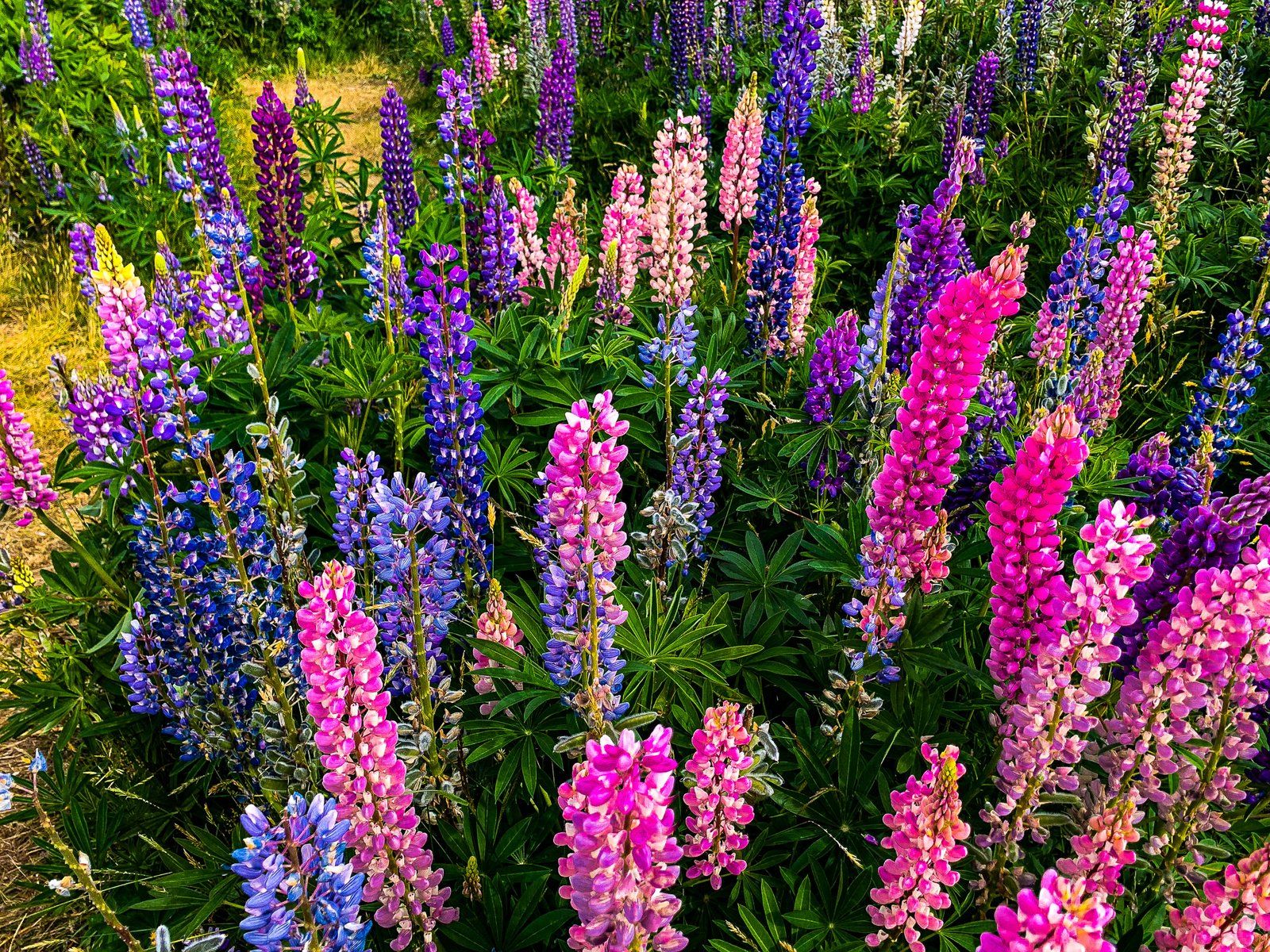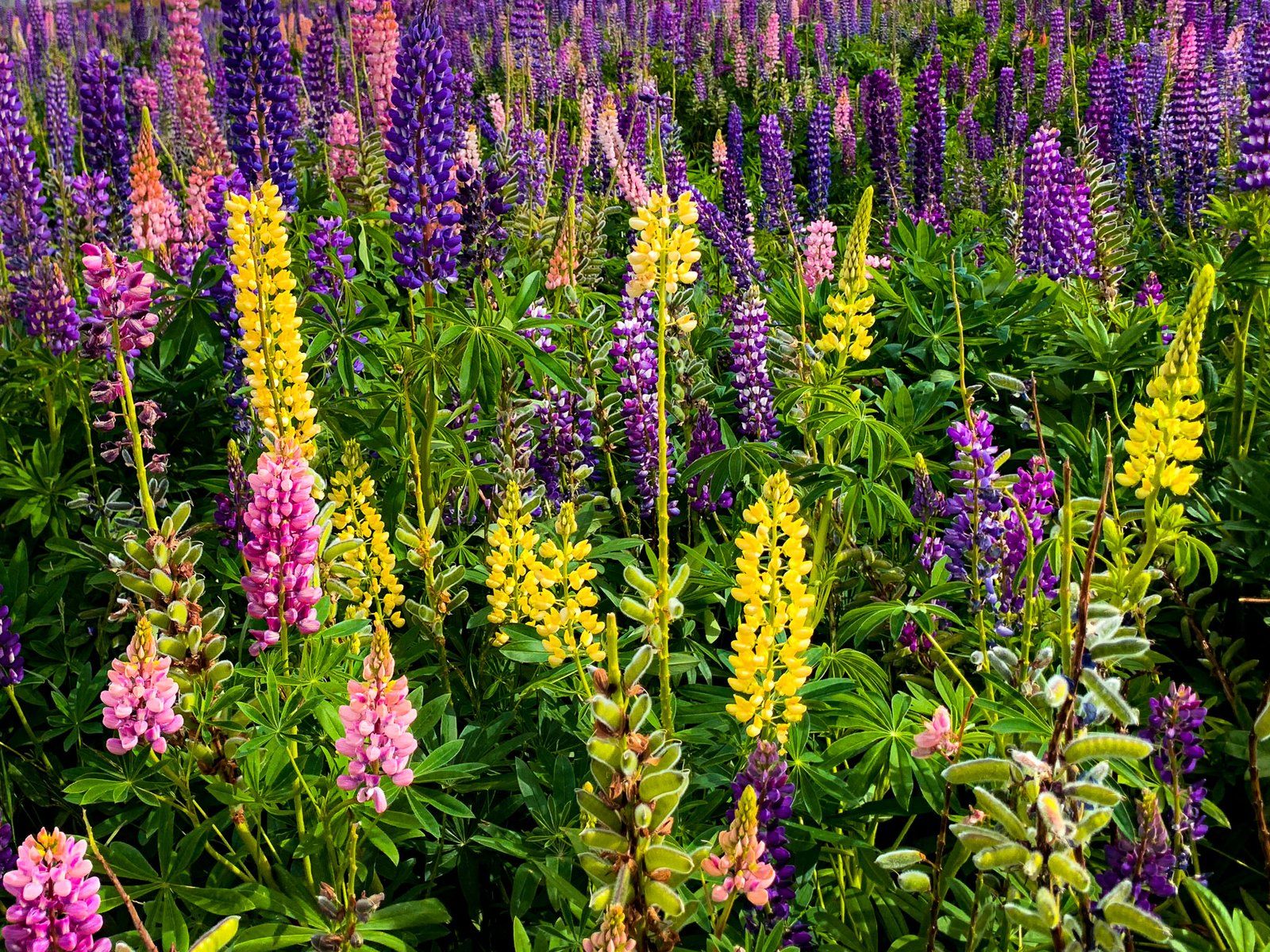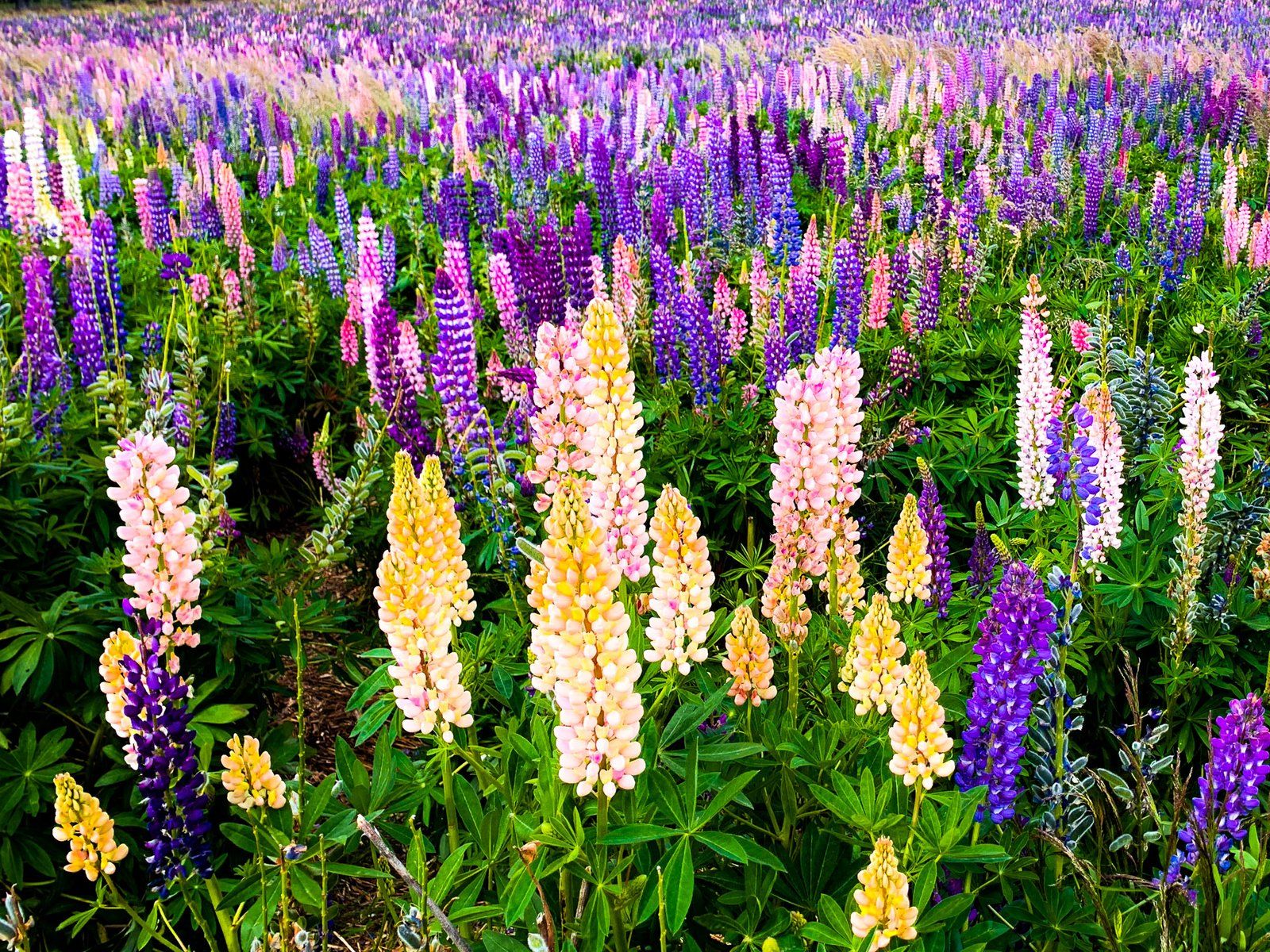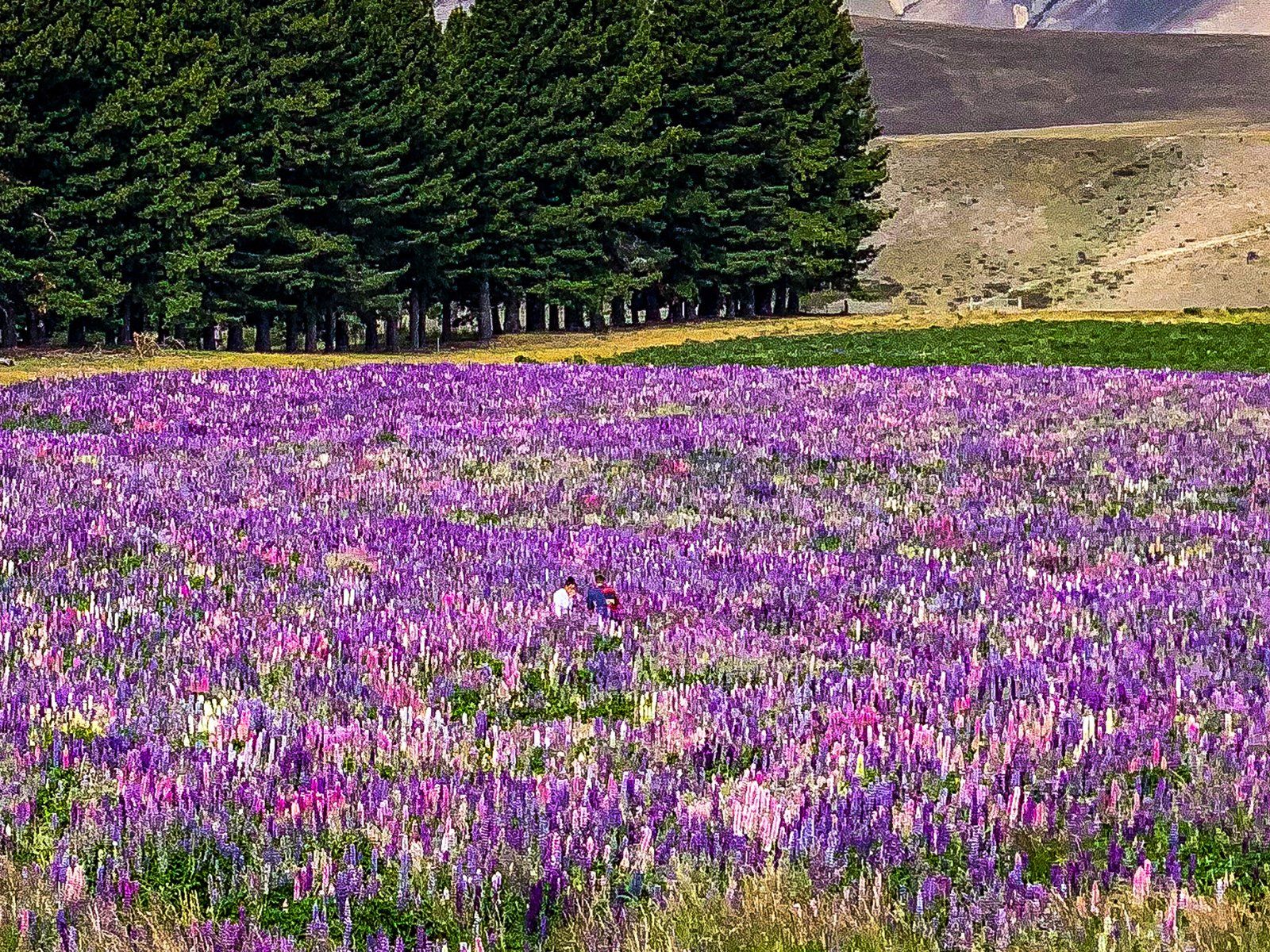Colourful Lupins in the Mackenzie Country
In Canterbury's Mackenzie Country, lupins create a vibrant spectacle in late spring and early summer. These striking flowers, introduced from the UK in the 1940s to 1950s, have become an iconic feature of the landscape.
A popular story credits Connie Scott with bringing the seeds from the UK and spreading them along roadsides to brighten the otherwise stark environment. Despite being considered a weedy pest, lupins play a beneficial role in restoring damaged soil and are even used as animal feed by surrounding stations.
A Colourful Display
If there was a plan to enhance the landscape with lupins, it has been a spectacular success. By December and January, fields, roadsides, and lakesides are adorned with these colourful blooms. While the flowers are predominantly blue and purple, a closer look reveals a full spectrum of colours, adding to the visual delight.
Historical and Geographical Origins
Lupins have a rich history, with origins in the Mediterranean. The Romans spread them across Europe over 2,000 years ago. Today, they are a popular snack in the Middle East. Lupins are also native to the Americas, with the Mackenzie Country being one of their latest habitats.
How to See the Lupins
To witness the stunning lupin displays, take a road trip to the Mackenzie Country along State Highway 8 during late spring or early summer. The roadside and some fields are full of flowers, especially near Tekapo and Lake Pukaki.
There are many other attractions in the region, including Aoraki / Mt Cook, Lake Ōhau, Burkes Pass and Mackenzie Pass.
